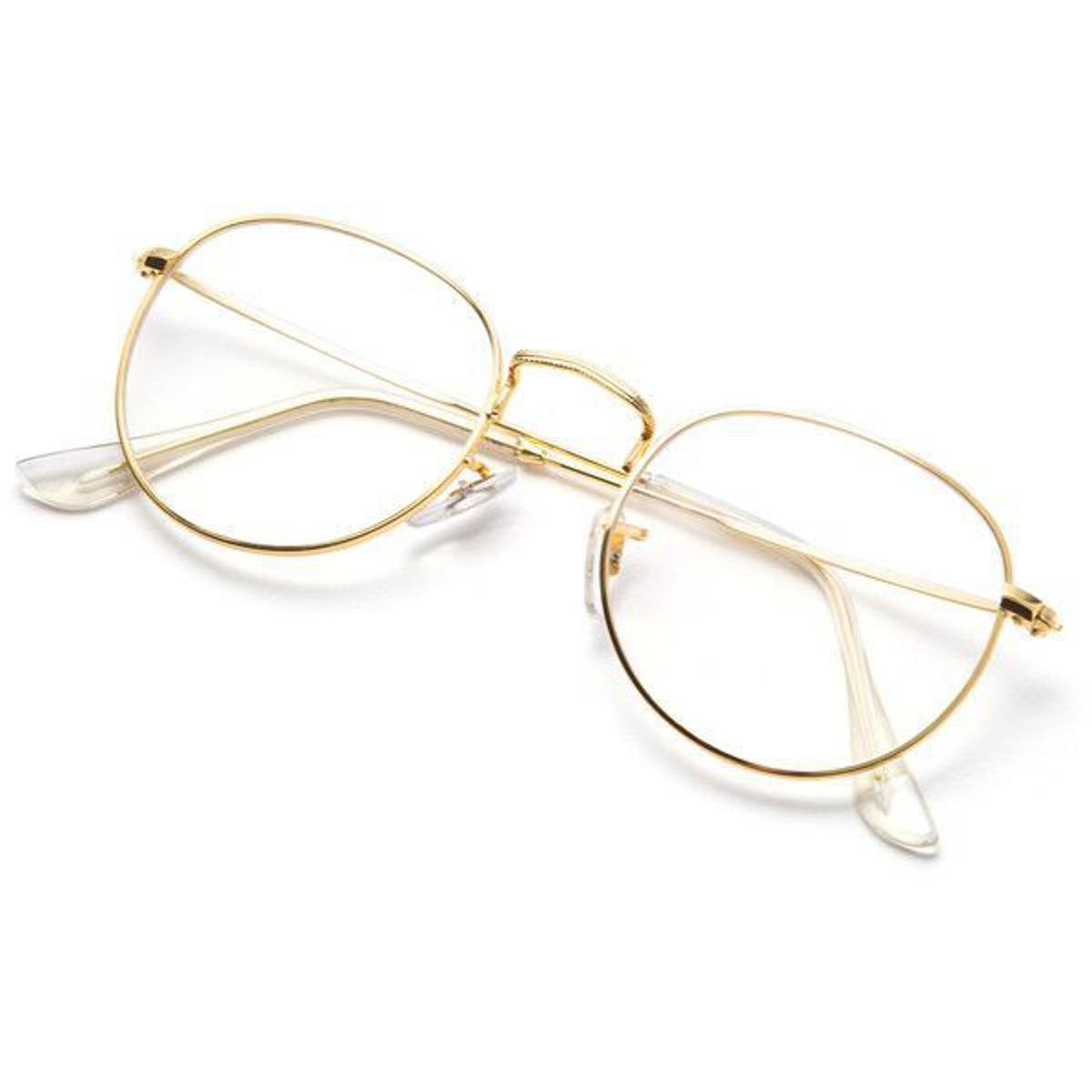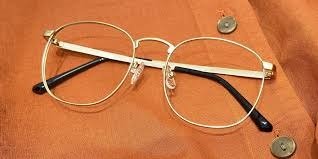Golden Frame Spectacles: A Timeless Icon of Elegance and Functionality
Golden frame spectacles are not just an accessory; they represent a fusion of function and timeless style. Whether donned by intellectuals, fashion icons, or professionals, golden frame spectacles have an enduring appeal that crosses the boundaries of culture, time, and gender. In a world where eyewear serves both corrective and aesthetic purposes, these spectacles are a symbol of understated luxury, offering an elegant balance between style and functionality. This article explores the history, symbolism, design considerations, and cultural significance of golden frame spectacles, underscoring why they remain a cherished choice for eyewear enthusiasts worldwide.
The Historical Journey of Spectacles
The history of eyewear spans several centuries, evolving from crude reading aids into sophisticated, precision-engineered accessories. Eyewear, in its earliest forms, was invented to assist those with vision problems, dating back to around the 13th century. Early spectacles were far from fashionable or comfortable; they were designed purely for utility.
As craftsmanship improved, eyewear became more refined and accessible to the masses. By the 18th and 19th centuries, spectacles began to reflect the wearer’s status and personality. During this period, golden frame spectacles started to emerge as a luxurious item, favored by the aristocracy, intellectuals, and professionals. Gold, as a material, symbolized wealth, knowledge, and refinement. Although metal frames were often heavier and more expensive, gold frames gained a reputation for durability and prestige, which only added to their appeal.
Symbolism and Cultural Significance of Gold
Gold has always been a symbol of wealth, success, and power. Throughout history, it has been used to represent divine authority, royalty, and elegance. In many cultures, the color gold is synonymous with prosperity and achievement. When applied to eyewear, gold frames carry these same connotations, making the wearer appear refined, accomplished, and sophisticated.
Golden frame spectacles, specifically, bridge the gap between the historical and the modern. In an era where minimalist and retro styles are in vogue, the warmth and shine of gold offer a distinctive look that resonates with individuals who appreciate vintage glamour combined with contemporary design.
Furthermore, in the context of eyewear, gold frames signify more than wealth—they speak of precision, craftsmanship, and taste. They suggest that the wearer is discerning, selecting not just functional eyewear, but spectacles that align with their sense of identity and aesthetics. Whether worn for practicality or fashion, golden frame spectacles are perceived as more than just corrective tools; they are wearable art.
The Design and Craftsmanship of Golden Frame Spectacles
One of the primary reasons golden frame spectacles continue to hold a prominent place in eyewear design is due to their craftsmanship and aesthetic versatility. The frames can be crafted from actual gold, gold-plated metals, or materials coated with gold hues, depending on the price point and the desired finish. These frames are known for their lightweight construction, durability, and hypoallergenic properties, making them comfortable for long-term wear.
Modern eyewear designers understand the significance of blending traditional craftsmanship with contemporary innovation. Golden frame spectacles are often designed using sleek, minimalist lines that enhance the face’s natural features without overwhelming them. The frames can come in a variety of shapes, from round to rectangular to aviator styles, each offering a different type of charm.
Round frames, often associated with intellectuals and artists, give a vintage feel reminiscent of the 1960s and 70s. Rectangular golden frames, on the other hand, add a touch of professionalism and seriousness, often seen in business settings. Aviator-style frames, with their broader, more masculine design, offer a sporty and adventurous look.
The construction of these frames also demands precision. High-quality golden frames are engineered to balance strength and flexibility. They need to withstand daily wear while providing the necessary comfort for various face shapes. Thin, lightweight designs often feature intricate details, such as engraved temples or subtle embellishments, which can further elevate their luxury status.
Popularity Across Generations and Genders
Golden frame spectacles have a broad, universal appeal that transcends both age and gender. This adaptability stems from their wide array of styles, each catering to different tastes and personal preferences. They are seen as unisex accessories, embraced by both men and women for their classic allure and sophisticated charm.
For men, golden frames offer a refined, authoritative look. They are often associated with figures of influence—CEOs, professors, and public figures—creating an image of confidence and success. The sleek, minimalist design adds a touch of elegance to formal attire, while also providing an intellectual aesthetic when paired with casual outfits.
For women, golden frame spectacles offer a mix of elegance and subtle glamour. Depending on the style of the frame, they can convey anything from retro-chic to modern minimalist. Women appreciate the way golden frames complement their skin tone, adding warmth and brightness to their facial features. Whether worn with a professional suit or a more relaxed, bohemian look, golden frame spectacles add a touch of sophistication to any ensemble.
Moreover, these frames have been widely embraced by younger generations who appreciate retro and vintage styles. Fashion-forward individuals who blend nostalgic designs with modern flair often choose golden frame spectacles as a statement accessory. They are a nod to past fashion trends, with the flexibility to fit into today’s evolving fashion landscape.
Golden Frame Spectacles in Popular Culture
Golden frame spectacles have long been a part of popular culture. From Hollywood films to the music industry, they’ve been worn by famous figures, cementing their status as a timeless icon. The association with prominent personalities only enhances their appeal, as celebrities and influencers often serve as trendsetters for the general public.
Icons like John Lennon made round golden frame spectacles famous in the 1960s and 70s, transforming them into a symbol of rebellion, creativity, and countercultural movements. More recently, actors, musicians, and social media influencers have adopted golden frames as a way to express individuality while maintaining an air of sophistication.
In cinema, characters wearing golden frame spectacles are often portrayed as wise, introspective, or authoritative figures. These associations create a subtle but impactful connection between the spectacles and traits such as intelligence, leadership, and foresight.
The Future of Golden Frame Spectacles
As fashion continues to evolve, so too does eyewear design. Yet golden frame spectacles remain resilient in their appeal, consistently finding a place in both classic and modern wardrobes. Designers are constantly innovating with materials and styles, ensuring that golden frames stay relevant. From eco-friendly materials to frames infused with technology, such as blue light filters for digital device use, golden frames are adapting to the needs of today’s consumers.
The enduring popularity of golden frame spectacles can also be attributed to their ability to blend luxury with practicality. They provide a level of personal expression that is rare in most accessories. They can be bold without being ostentatious and classic without being outdated.
Conclusion
Golden frame spectacles represent more than just a practical tool for improving vision—they are a powerful statement of style, sophistication, and individuality. With a rich history rooted in luxury and craftsmanship, they have evolved to meet the demands of modern fashion while maintaining their timeless appeal. Whether worn by artists, professionals, or fashion enthusiasts, golden frame spectacles continue to symbolize elegance, intelligence, and class, making them a valuable accessory in any era.






